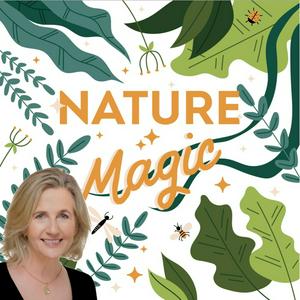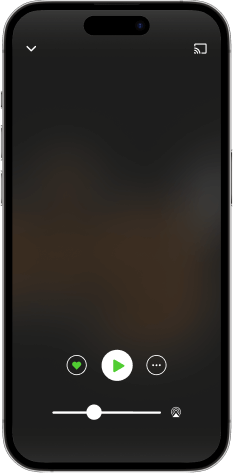76 Victoria Beeler The Butterfly Lady
Today Mary is talking to Victoria Beeler. Victoria is a butterfly enthusiast and enjoys gardening, wildlife, nature, and learning. She and her family have helped with the Smith-Gilbert Gardens butterfly exhibit in Kennesaw, Georgia, U.S.A., and with releasing butterflies there. They have raised Monarchs—from eggs, to caterpillars, to chrysalis, and to emerging butterflies—in an outdoor butterfly garden habitat at home near Atlanta for the first time last fall and then released them into the wild to migrate! It was truly an incredible, inspiring, and transformative experience! Victoria has written a documentary book about her Monarch experience with raising and releasing them. In Journey with Monarchs: A Personal Experience of Raising and Releasing Monarchs in the Home Garden, she combines photos of the Monarchs’ life stages and personal knowledge about Monarchs with the science. Monarchs are so special, and their legacy can be continued by planting native milkweed. Monarchs have also inspired Victoria to give native milkweed seeds as gifts (seeds of hope) to family and friends and Monarch books to children in her community to save and protect Monarchs and continue their legacy. Monarchs bring joy, hope, and continuity. Nature is a blessing. Planting native milkweed and creating a wildlife habitat are important to helping Monarchs, as well as birds, pollinators, and the ecosystem. It also connects people. All of creation is interconnected and weaves together a unique, dynamic tapestry of life. Victoria hopes that, together, we can spread joy to all and save the Monarchs and wildlife!Victoria's suggestions How We Can Support Nature: ·Create natural habitat in our yards and communities to support the full life cycles and food webs of local biodiversity and restore species populations. -Garden, pocket prairie/meadow (mini-prairie/meadow). -Try to let it grow naturally. Limit mowing to pathways (reduce mowing). ·Provide host and nectar plants (host-plant specialists / plant-insect interactions; no milkweed, no monarchs; no flowers, no pollinators; no insects, no balance). -“Insects are the animals that are best at transferring energy from plants to other animals…” (Doug Tallamy, Nature’s Best Hope, 2019). -Also include a “puddling station,” a place in the habitat area where butterflies and moths can absorb minerals from muddy soil and pebbles (place pebbles in a tray with water and mud).·Plant native plants and keystone plants (most beneficial to local ecosystems and increase biodiversity, ecological connectivity, and ecosystem function). -Top 20 native trees, like the oak, cherry, and willow, support over 5,000 butterfly and moth species (Tallamy, Nature’s Best Hope, 2019). -Oaks support about 557 caterpillar species- more than any one plant; oaks make the most food; excellent for supporting local food webs; oak = top keystone plant species. -Five percent of the local keystone plant species can host up to 75 percent of local Lepidoptera species (including some local keystone plant species benefits greatly) (Tallamy, Nature’s Best Hope, 2019). -U.S. resource: National Wildlife Federation’s Native Plants Finder, which shows the native plants by zip code that support local species and food webs. -Try to remove and replace non-native, invasive species with native plants. -Balance: Plant mostly native plants, with some exceptions (a habitat space with primarily native and keystone plants benefits greatly; helps local ecosystem; having some native plants is better than none). -Replace with native plants gradually (manageable segments/tasks/goals); a process.·Provide shelter for non-migratory, overwintering butterflies and moths (safe caterpillar pupation sites) -Leaf litter for moth caterpillars to drop from their host trees, burrow into the leaves and/or soil, and spin their cocoons. -Leaf litter is also a food source for some caterpillars. -Leave plant stems, which provide nesting cavities for native bee species & pupation sites for caterpillars. -Fallen logs & branches, which provide nesting sites for native bee species. -Leave a bundle of sticks or brush pile for birds, other animals, & native bees to nest. -Thick or uncut vegetation. -Leave some weeds, which are host plants to some butterflies and moths. -“Leave an area of uncut grass all year round to provide shelter for pupating caterpillars (especially caterpillars that feed on grass) and for butterflies in reproductive diapause” (Biodiversity Ireland, “Gardening for Butterflies,” 2023). -Native trees to shelter roosting butterflies. -Include hedgerows (hawthorn and holly) -Have a layered landscape (horizontal layer—understory, with woodland/shade plants; middle layer—shrubs; and vertical layer—overstory/canopy, with trees). -Have a “continuous sequence of flowering plants (plants that flower continuously; perennials; benefits butterflies, moths, bees, and other pollinators)” (Tallamy, Nature’s Best Hope, 2019).·Feed the insects to feed the birds (create a garden/habitat space that welcomes all of nature). -A plant is a bird feeder, a pollinator feeder, and much more.·Pesticide-free/chemical-free.·Can include container plants.·If outdoor lighting (artificial light, which interferes with nocturnal insects and birds) is used, consider motion sensor lights instead (not continuous light) -Nocturnal insects (moths) usually get nectar from nocturnal flowers and need natural light from the moon (not artificial light) to find host and nectar plants and to mate; become easy targets for predators (visible) (Tallamy, Nature’s Best Hope, 2019).·Shade-grown coffee grown under native trees (shelter for birds).·Participate in citizen/community science (butterfly tagging and butterfly counts). -U.S.: -Monarch Watch tagging and the North American Butterfly Association’s butterfly counts; Monarch Joint Venture and Save Our Monarchs (monarch organizations). -Other resources—Stokes Butterfly Book: The Complete Guide to Butterfly Gardening, Identification, and Behavior (1993) by Donald and Lillian Stokes and Ernest Williams -“MrLundScience” YouTube channel -Wings in the Meadow (1967) by Jo Brewer -Bringing Nature Home: How You Can Sustain Wildlife with Native Plants (2019) by Doug Tallamy -Nature’s Best Hope: A New Approach to Conservation That Starts in Your Yard (2019) by Doug Tallamy -The Living Landscape (2012) by Rick Dark and Doug Tallamy -Ireland: -Irish Butterfly Monitoring Scheme (apart of the National Biodiversity Data Centre of Ireland)—note butterfly populations, flight patterns, and habitat availability from April-September. -Butterfly Conservation’s Big Butterfly Count (Northern Ireland)—count the butterflies seen in a 15-minute period and upload results online. -Ireland threatened butterflies and moths (large white, small white, green-veined white, ringlet, small tortoiseshell, small copper, speckled wood, meadow brown, red admiral, peacock, painted lady, holly blue, common blue, six-spot burnet, and silver-Y). -Butterfly Conservation Ireland’s National Garden Butterfly Survey—record butterflies seen in your garden over a 3-month period (https://butterflyconservation.ie).·Ireland butterfly resources -National Biodiversity Data Centre (Ireland)—“Ireland’s Butterfly Series—Gardening for Butterflies: Helping Butterflies with Native Plants” PDF resource (https://biodiversityireland.ie). -Butterfly Conservation (Northern Ireland Branch)—“Do It Yourself” resources on butterfly and moth events, volunteering, counts and activities, and gardening (https://butterfly-conservation.org).·Ireland native larval host plants: -Buckthorn (brimstone butterfly) -Clovers (clouded yellow butterfly) -Nettle (comma, peacock, red admiral, and small tortoiseshell butterflies) -Trefoil and vetch (common blue and wood white butterflies) -Garlic mustard and watercress (green-veined white and orange-tip butterflies) -Holly and ivy (holly blue butterfly) -Brassicaceae family of plants and nasturtiums (large white and small white butterflies) -Fescues and meadow grasses (meadow brown and small heath butterflies) -Thistles (painted lady butterfly) -Violets (fritillary butterfly) -Sorrel (small copper butterfly)·Ireland native nectar plants: -Sedum -Verbena -Sage https://biodiversityireland.ie/app/uploads/2023/06/Rewilding-Yo


